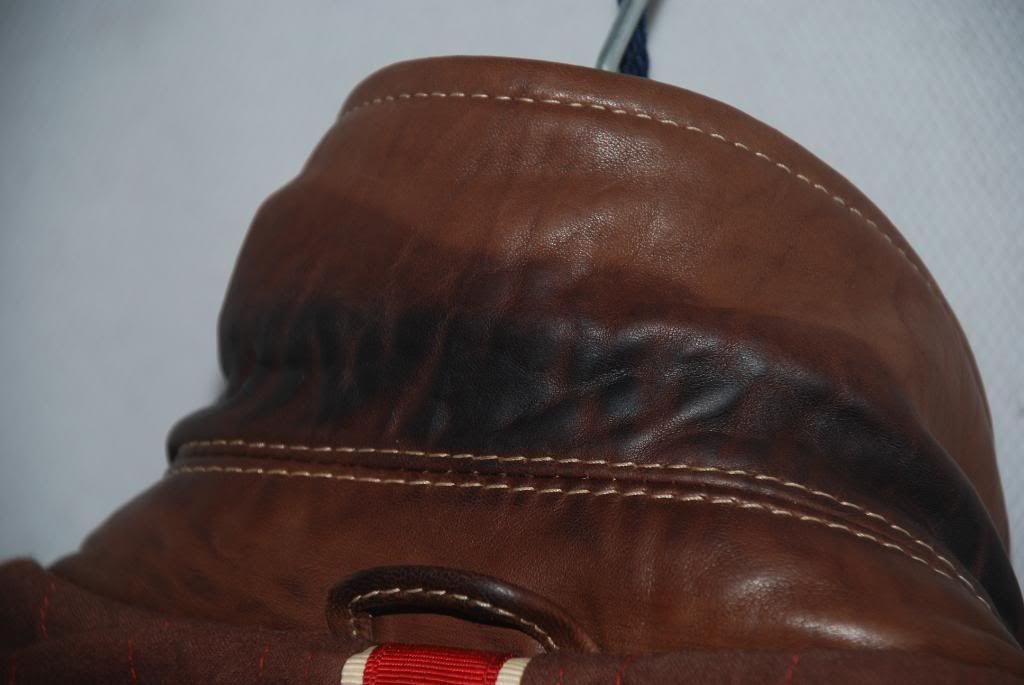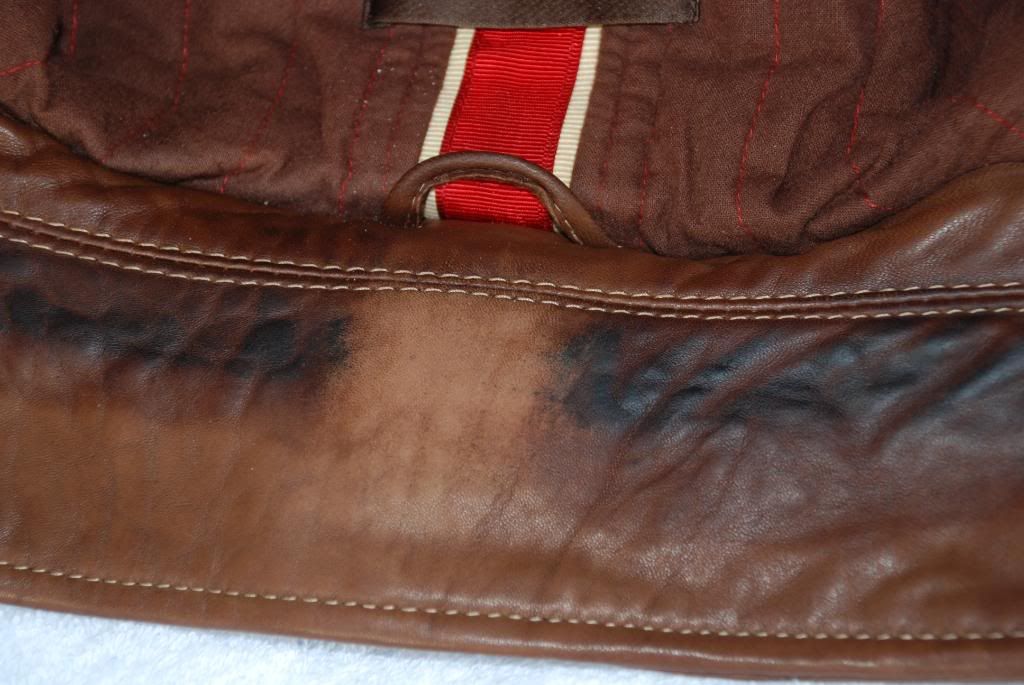King Ranch leather is “King of Auto Leather Seat�.
When we can successful tackle them we can say that we have reached the zenith of leather cleaning.
Before we know what we are cleaning we also must know what the make-up of leather is.
Unlike other upholstery material, up to 30% of leather is composed of liquid chemistry and 70% protein fiber.
These up to 30% chemistry when diminishes through ageing, or adverse cleaning undermine the characteristic integrity of the leather.
Thus denaturing the leather is to be avoided, on the other hand rejuvenating the leather is just like topping up engine oils.
That’s why natural absorbent leathers are difficult to clean when non leather-safe products are used.
It’s because by nature they are more sensitive than plastic coated leathers.
Is Leather pH and Heat Sensitive?
The average pH value of vegetable tanned leathers is around 4, chrome tanned is much high than 4 thus less pH sensitive.
The leather protein fiber is cationic (+) and all these other leather constituents are anionic (-), thus they are hydrogen-bonded.
Alkaline pH values of cleaning products will break bonds between the protein fibers and the leather constituents, resulting in stiffness.
Heat will cause the leather to shrink.
Alkalinity and alcohol may cause the dyes to bleed with rings.
Leather constituents that can be replenished are the preservatives against mold and bacteria; fatliquor (fat, oil & water); dyestuff.
What is Leather Cleaning?
Leather cleaning is the traditional activity of removing contaminants and undesired substances from the leather surface as well as from within the leather structure to reduce damages or harm to human health or valuable materials.
When we understand the basics we can go forward to clean and rejuvenate them holistically all in one go!
What is Odor?
There are various types of smell and leather-safe products are the way to go with a pH range from 3 to 5.
Smoke odors have very fine micron particular size that is best treated with a leather smoke specialty product.
Musty odors are from fungi and mold off-gassing that requires a leather-safe fungicide.
Obnoxious protein odors derive from bacteria of-gassing that requires a leather-safe bactericide.
After these specialty odor removal treatments, it's ideal to mask it with a classical leather scent.
What is Leather Degreasing?
Degreasing will also remove the natural fats and oils from the leather as the solvency leach the fibers of fats and oils and when the solvency evaporates the in-between fibers stick together missing the oils and fats to lubricate them – thus leather stiffen up.
It is good practice to replenish the fats, oils and water with fatliquor while the leather is still damp.
Here we are talking about cleaning from within the leather structure.
A low pH degreaser is recommended as low as pH 2.2.
While the solvency takes care of stripping the foreign oil and grease the detergency helps to penetrate, lubricate and suspense foreign contamination.
The low pH value is to acidify the leather protein fiber more cationic to strengthen the leather constituents’ hydrogen-bonding power to balance off the degreasing harshness.
What is Leather Rinsing?
It is the Rinsing that does the work of removing all foreign contamination from within the leather structure through the natural wicking process and from wiping it direct from the leather surface.
At a pH value of 3.0 it stabilize the leather chemistry integrity at the same time by reducing adverse effect to the leather structure.
What is Leather Rejuvenation?
Fatliquor is the lifeblood of leathers – as fat, oil and water diminishes the suppleness and strength of leather goes as well.
It is best to practice fatliquoring while the leather is hydrated for even penetration.
What is the Wicking Process?
It is the natural phenomena that when leather gets wet throughout it will eventually dries up.
This wicking process can work for us or it can work against us, depends on how we harness this phenomena.
For us - is when we flood the leather structure with leather-safe products it will help to move foreign contamination to float up to the surface to be wiped away or to be trapped with an extended surface layer of absorbent tissue paper or toilet rolls.
This pH 3.0 rinsing process alone will clear most of ring marks due to uneven pH value from foreign stains.
Against us – is when we ignore fatliquoring while the leather is damp and when leathers dries the leather fibrils sticks even closer together that where you have stiff leathers when it dries.
Once dry leather is flex without the fibers being lubricated by the fatliquor, it breaks thus weaker in strength.
What is Aniline Top Coating?
The beauty of aniline leathers depends on this top coating.
Besides enhancing the natural beauty of the leather, this top coating allows the leather to breath.
What is Non-Stick, Rub-Resistance Protection?
It is just like you would have a non-stick Teflon Pan.
Simply non-stick against the detrimental effect of daily soiling and making dye-transfer stains and the nasty ballpoint ink stains removal much easier.
A non-film-forming protector is more ideal where you want the leather to breathe.
If you have read thus far, you would have the stamina to go forward to be the “King of Leather Cleaners� in your area.
Roger Koh
Leather Doctor®



